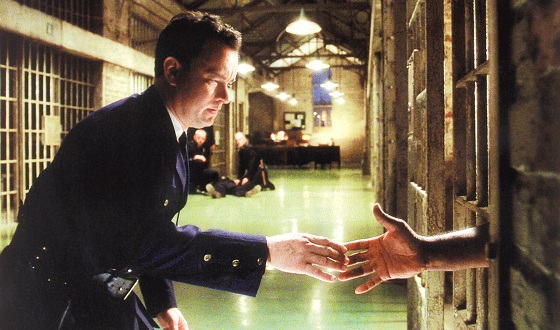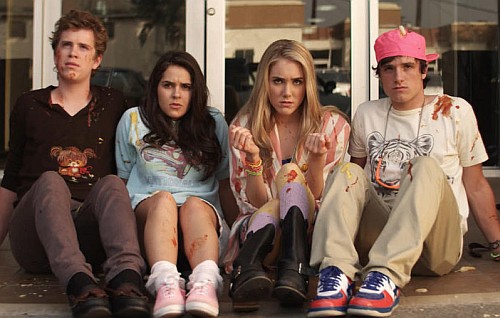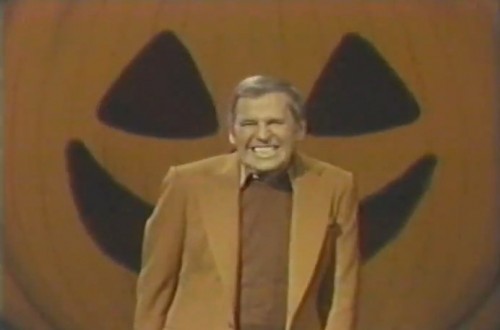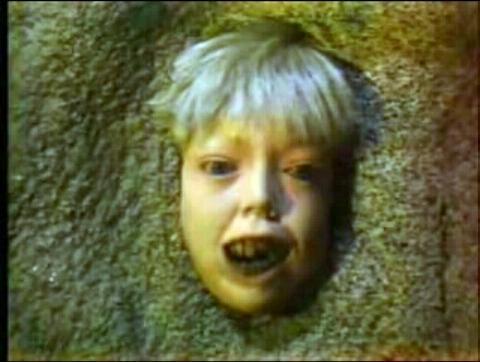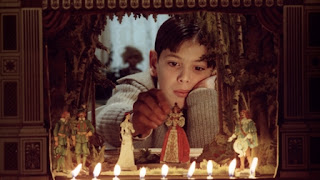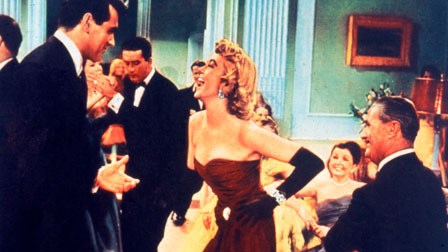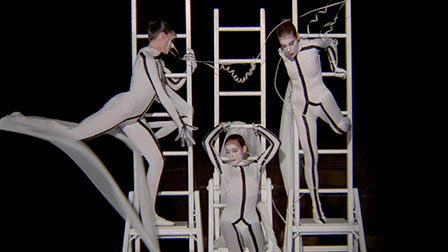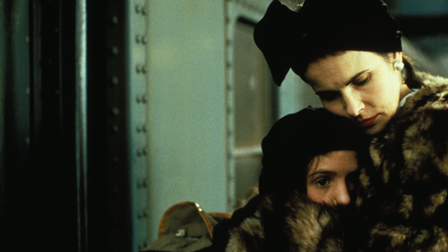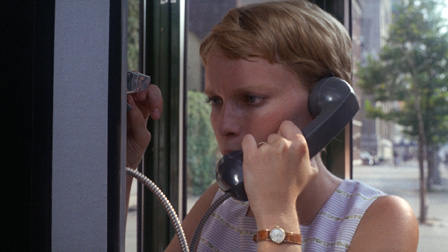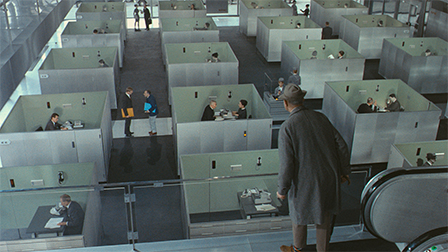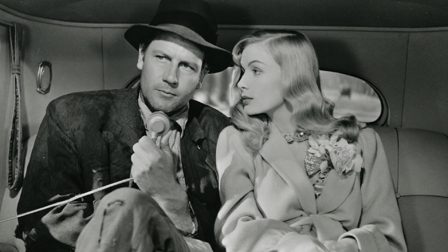Search This Blog
Movies w/ Movies Movington
Eclectic musings on classic Hollywood, art house cinema, cult films, underrated gems, and obsolete home video formats.
Posts
Latest Posts
Oscar Bait of Yore: The Green Mile (1999)
TAGLINE
"Paul Edgecomb didn't believe in miracles. Until the day he met one."
BACKGROUND
The Green Mile originated as a Stephen King novel published in six monthly volumes beginning in March 1996. King reportedly wrote it without knowing the ending, and released it serially so readers would be unable to skip ahead.
The film version proceeded quickly, with Variety announcing in November 1997 that Hanks would star in the adaptation written and to be directed by Frank Darabont. Hanks was already committed to You've Got Mail, so Green Mile shot between July and December 1998 (running a full month over schedule). It was released a year later on December 10th, 1999, just in time for Christmas and in the heat of awards season.
PRESTIGE VALUE
Pretty high. Darabont was coming off his debut The Shawshank Redemption, which was not a box office success but got seven Oscar nominations (including Best Picture and Best Adapted Screenplay for Darabont, winning zero). Shawshank caught on big time once it hit home video and became a small sensation, aided by countless airings on TNT.
After John Travolta turned down the lead role of death row guard Paul Edgecomb, Darabont offered it to Hanks (who wasn't yet regarded as America's Dad, but had recently won back to back Best Actor Oscars for Philadelphia and Forrest Gump). The rest of the cast filled out with one exception: the Green Mile's Christ-like inmate John Coffey. Bruce Willis recommended Michael Clarke Duncan to Darabont after working with him on Armageddon, and Coffey became Duncan's breakout role.
CRITICAL RESPONSE
Mostly positive although not overwhelming. Variety called it "intermittently powerful and meticulously crafted" but took issue with its "considerable over-length and some shopworn, simplistic notions at its center." Roger Ebert didn't mind the length in his 3 1/2 star review, saying "I appreciated the extra time, which allows us to feel the passage of prison months and years."
Critics generally liked the performances and craftsmanship but didn't go for the bizarrely dark yet simultaneously sentimental plot, and many couldn't get past the 188-minute runtime. Not to mention that the acclaimed Shawshank was a tough act to follow, a fact that hovers over Darabont's career even today.
BOX OFFICE
Until 2017's It, The Green Mile was the highest-grossing Stephen King adaptation. It made a very respectable $136 million ($286 million worldwide) off a $60 million budget.
It placed #2 at the box office its opening weekend with $18 million, just behind Hanks' own Toy Story 2 (which edged it out with $18.2 million) and ahead of the Rob Schneider comedy Deuce Bigalow: Male Gigolo, which grossed $12.2 million. Being an R-rated drama, The Green Mile held on and remained a strong performer over the holidays, where it faced off against the similarly adult Any Given Sunday and The Talented Mr. Ripley.
AWARDS
This is where it gets tricky. 1999 was a landmark for groundbreaking American cinema and is frequently cited among the best movie years of all time. American Beauty (which won Best Picture), Magnolia, Three Kings, Being John Malkovich, Fight Club, The Insider, Boys Don't Cry (not to mention foreign contenders like All About My Mother and Topsy Turvy)... The list goes on.
With that competition, a 3-hour Stephen King prison drama starring Tom Hanks from the director of The Shawshank Redemption seemed awfully square (though perhaps not as Oscar bait-y as the big Miramax title that year, The Cider House Rules). Although it received only one Golden Globe nomination (Best Supporting Actor for Duncan), it did nab four Oscar noms but no wins: Duncan again, best Sound, Best Adapted Screenplay, and Best Picture. It got practically no attention from critics groups.
IS THIS REMEMBERED TODAY?
The Green Mile certainly hasn't been forgotten, but it's rarely mentioned as a top shelf King film (it's no Misery, The Shining, Stand By Me, etc.) and is perhaps best thought of as a "what the hell were they thinking?" in regard to the Academy throwing it a bone in Best Picture. In a more conventional year, its nomination might have been a given, but when you consider the embarrassment of cinematic riches in 1999... it feels a bit tone deaf. With the Academy's current push to make its membership more diverse and inclusive, The Green Mile is just the kind of film that might not fare as well if it were released today.
HOW DOES IT HOLD UP?
Really well! The Green Mile is a solid movie that despite its VERY episodic three hours manages to hold attention with the same brand of old Hollywood grandeur that Darabont brought so memorably to Shawshank. It's moving and well crafted, with a few abrupt tonal shifts that seem more the fault of the source material than Darabont's script. As the cliche goes, this is a big budget, intimate epic "kind of film they don't make anymore" -- if The Green Mile were published today, it would probably end up an Emmy-grubbing miniseries on HBO or Netflix.
THE GOOD
- Has anyone ever gone wrong casting Tom Hanks? The character of Paul Edgecomb doesn't seem like much at first, but Hanks uses his trademark everyman charm to add shades of color to the slavishly moral, good-hearted prison guard. Does Paul Edgecomb have flaws? Not really. A rich inner life? Can't say that he does... Yet Hanks' greatest skill is being the eyes and ears of the audience, and his typically effortless presence grounds the movie and holds it together.
- Character actor mecca. David Morse. James Cromwell. Michael Jeter. Graham Greene. Sam Rockwell in one of his first major roles. Jeffrey DeMunn. Barry Pepper. Harry Dean Stanton. Bonnie Hunt. A one-scene cameo by Lieutenant Dan himself, Gary Sinise. PATRICIA CLARKSON! Veteran Hollywood player Dabbs Greer in a stunning but brief framing device as the elder Edgecomb. Nearly every performance is fine tuned to perfection and compelling to watch, even when the novelistic plot sags.
- Thomas. Fucking. Newman. My favorite composer was on a crazy roll in the mid-to-late '90s, and was Oscar-nominated the same year for his career-best score to American Beauty. (In 1998 he delivered two knockout scores for flawed prestige films, The Horse Whisperer and Meet Joe Black). His Green Mile music is no exception: it's a masterwork of understated emotion, atmospheric and dense, intriguing and mysterious, perfectly suited to the visual tone Darabont conveys onscreen. Every time his score kicks in, the film gets 15-20% better.
- Michael Clarke Duncan. While many had issues with the character of John Coffey (see below), Duncan's performance is remarkable and worth the hype. He portrays Coffey as fully human despite his supernatural (and possibly religious) abilities, and lends real dignity to Coffey's mental disability. He doesn't quite go "full" (...well, you know the line from Tropic Thunder). His Coffey is more of an innocent who's just as tortured by his gift as he is blessed with it.
THE BAD
- Yep. It's long. I didn't mind, but I can see how others would be put off by The Green Mile's lack of plot (it's a full hour before Coffey's miracle-working reveals itself). That said, the film is smoothly paced and the performances assure it never gets dull.
- The Green Mile is also WEIRD. It's like Stephen King took the straightforward prison melodrama of Shawshank and melded it with horror elements (the disturbing executions), faith-based touches, and a clever mouse named Mr. Jingles. This isn't necessarily a deterrent, but there are more than a few strange moments as Darabont navigates the off-kilter tone of King's book.
- Okay, so John Coffey is an African-American Jesus figure who's falsely accused of raping and murdering two little white girls (another creepy detail from King) but instead of exonerating himself he'd rather... cure Patricia Clarkson's brain tumor? Cultural critics including Spike Lee accused King of using the "magical negro" trope, but King denies any racial insensitivity: "When I was writing the book I said to myself, 'What can I do to make sure that this character goes to the chair even if he's innocent?' And I said, 'Well, it's 1933. If he's black, nobody's going to let him off the hook no matter what the evidence is.' So I made him a black guy." Make of that what you will! While the character isn't the most well-rounded, I found Duncan's work to be totally free of cliches, so he did King a solid there (even if the subtext is uncomfortable).
- As nicely acted as The Green Mile is, one performer stands out (and not in a great way): Doug Hutchinson as the boyish and sadistic guard Percy Wetmore, who brutalizes several inmates (intentionally botching one's execution), nearly clubs Mr. Jingles to death, and whose general presence is just sort of... icky. Maybe it's the writing (Percy has the subtlety of a sledgehammer), and Hutchinson isn't bad per se -- on the contrary, he's almost too effective. Something about him feels noticeably off, which might have been intentional, but it's safe to say Hutchinson's commitment to the detestable Percy may have cost him work (he later made tabloid headlines for marrying 16-year-old Courtney Stodden at the ripe age of 51 -- YIKES!!).
THE WTF
- It's safe to say this is the only film you'll ever see where Michael Clarke Duncan uses his magical powers to cure Tom Hanks of a UTI so he can go home and have sex with his wife, Bonnie Hunt. In a holiday blockbuster, nonetheless!
BASICALLY
The Green Mile was old school Hollywood entertainment in a year when it was more fashionable to take chances. It might seem dated in light of 1999's other offerings, but it's memorable and extremely well made. Oddly enough, this dark, brooding prison tale with hints of quirky humor and supernatural goings-on isn't that conventional at all.
UP NEXT
I seem to be unraveling with a trifecta of what Ryan Murphy calls "premium actresses": Meryl Streep, Julianne Moore, and an Oscar-winning Nicole Kidman (and her prosthetic nose) in the brutally depressing literary juggernaut The Hours!
- Get link
- Other Apps
October 2017: Favorite Halloween Rarities
Halloween is possibly my favorite holiday, yet I never seem to have enough time to consume all the vintage nostalgia (cult films, TV specials, sitcom episodes, and other ephemera) that makes it so creepily delightful.Here are 8 selections (with YouTube links) that I make a point to watch every year, no exceptions:
"Addams Groove" (1991)
The Addams Family overcame many production problems (and the bankruptcy of its first distributor, Orion) before its release by Paramount on Thanksgiving 1991. The film was an instant smash, thanks largely to its sharp humor and inspired casting. But it was far from a sure thing, so the studio enlisted Hammer (fresh off his #1 hit "U Can't Touch This") for an end credits song and accompanying MTV video directed by future Blank Check auteur Rupert Wainwright.
"Addams Groove" is a staggeringly awful but amazingly catchy confection. It doesn't even attempt to match the creepy/kooky tone of its namesake film, yet its nonsensical chorus samples the original show's theme song: "They do what they wanna do / say what they wanna say / live how they wanna live / play how they wanna play / dance how they wanna dance / kick and they slap a friend" - what?!
The video is filled with outlandish imagery, most notably a crude CGI rendering of Hammer's severed head bouncing in time to the music. Even worse, the film's stars are featured in cameos that reek of contractual obligation. It's an astoundingly wrongheaded yet compulsively watchable experience that must be seen to be believed.
Bonus: if you obtain the VHS release of "Addams Groove" (which I highly recommend), it comes with a 30-minute making of documentary in which Hammer and the filmmakers appear to be taking their jobs VERY seriously. Just try to get it out of your head!
Detention (2012)
Writer/director Joseph Kahn is best known as one of the hottest names in music videos: his recent credits include a long-running collaboration with Taylor Swift. But after his film career failed to take off with 2004's unfairly maligned biker movie Torque, Kahn spent $10 million of his own money (yes, you read that correctly!) to make his second feature, Detention.
An expert post-modern stylist, Kahn effortlessly weaves together a jumble of influences. Self-referential slasher films like Scream, John Hughes misfit comedies, reality television, Freaky Friday, and "MMM-Bop" are mixed, then microwaved on the highest setting - the result is a singular horror movie that's really a satire that's really a heartfelt ode to '90s pop culture, produced a half-decade before the '90s actually became relevant again.
Kahn's ability to anticipate nostalgia-based trends serves him well in the music world, but it truly reaches another level in his features. You'll notice I haven't summarized the plot of Detention: all you need to know is that it includes a time-traveling bear and a Saw-like torture porn spoof called Cinderhella. Watch this and be amazed!
Disney's Halloween Treat (1982)
If you grew up watching the Disney Channel, you've probably seen a version of Disney's Halloween Treat. Also called A Disney Halloween, the special exists in several different cuts - all of which are expertly curated selections of animated shorts and clips of Mickey's most famous villains.
Both begin with the same jaunty theme song ("It's a scream!") set to one of Disney's first cartoons, the 1929 Silly Symphony "The Skeleton Dance." The animation is primitive but still infectious - from there, we get some genuinely disturbing early fare like "Donald Duck and the Gorilla" (1944) and "Pluto's Judgment Day" (1935), in which the lovable canine is sent to hell by a jury of demented cats.
The original Halloween Treat (broadcast many times on Disney and ABC over the years) was hosted by an animatronic talking pumpkin, but others (like the one released on a long out-of-print VHS) featured the Magic Mirror from Snow White. Tim Salmons provides a thorough summary of its many incarnations over at Blumhouse, but regardless of which one you choose, this is an evocative and surprisingly eerie mix tape that's a perfect fit for the fall season.
Both begin with the same jaunty theme song ("It's a scream!") set to one of Disney's first cartoons, the 1929 Silly Symphony "The Skeleton Dance." The animation is primitive but still infectious - from there, we get some genuinely disturbing early fare like "Donald Duck and the Gorilla" (1944) and "Pluto's Judgment Day" (1935), in which the lovable canine is sent to hell by a jury of demented cats.
The original Halloween Treat (broadcast many times on Disney and ABC over the years) was hosted by an animatronic talking pumpkin, but others (like the one released on a long out-of-print VHS) featured the Magic Mirror from Snow White. Tim Salmons provides a thorough summary of its many incarnations over at Blumhouse, but regardless of which one you choose, this is an evocative and surprisingly eerie mix tape that's a perfect fit for the fall season.
While not exactly obscure, this is one of the best Halloween editions of any TV comedy, alongside Roseanne's annual episodes and The Simpsons's "Treehouse of Horror" parodies. As opposed to most specials, which lean into the fun or scariness of the holiday, Freaks and Geeks masterfully uses it to uncover the bittersweet gaps between childhood and adolescence.
The contrasting plotlines are simple: Lindsay (Linda Cardellini) decides to hang with the freaks instead of indulging her mom's (Becky Ann Baker) yearly tradition of handing out candy in costume. Meanwhile, Sam (John Francis Daley) goes out trick-or-treating with the geeks, only to find himself literally egged by his older sister.
Baker is the secret MVP of this episode, and her gradual realization that both her children are outgrowing her is quietly shattering. But the show's focus, as always, is on the teens - which means Martin Starr's iconic line readings as Bill Haverchuck ("I'm not a girl! I'm a bionic woman!") and Samm Levine's Neal getting a little too comfortable in his Groucho Marx costume.
Deep down though, Freaks and Geeks recalls the Halloweens we've all had and probably forgotten about: those awkward middle years when we were too old to celebrate as children, but not adult enough to fully escape the nest.
The contrasting plotlines are simple: Lindsay (Linda Cardellini) decides to hang with the freaks instead of indulging her mom's (Becky Ann Baker) yearly tradition of handing out candy in costume. Meanwhile, Sam (John Francis Daley) goes out trick-or-treating with the geeks, only to find himself literally egged by his older sister.
Baker is the secret MVP of this episode, and her gradual realization that both her children are outgrowing her is quietly shattering. But the show's focus, as always, is on the teens - which means Martin Starr's iconic line readings as Bill Haverchuck ("I'm not a girl! I'm a bionic woman!") and Samm Levine's Neal getting a little too comfortable in his Groucho Marx costume.
Deep down though, Freaks and Geeks recalls the Halloweens we've all had and probably forgotten about: those awkward middle years when we were too old to celebrate as children, but not adult enough to fully escape the nest.
Always in search of his next meal, the ever-resourceful Garfield recruits his canine sidekick Odie to go trick-or-treating, only to cross paths with a disfigured old man and a horde of ghost pirates (or is it pirate ghosts?). The thin plot begins aimlessly as Garfield and Odie try on costumes and fantasize about candy, then abruptly switches gears when the aforementioned ghost pirates/pirate ghosts reveal themselves at the climax.
Garfield's Halloween Adventure wouldn't be nearly as effective if it weren't for that somewhat jarring tonal shift. It's the kind of cartoon parents turn on before leaving the room, only find their youngsters properly traumatized when they return.
Halloween is Grinch Night (1977)
Lovers of the wholesome holiday staple How the Grinch Stole Christmas beware: this truly bizarre Seuss installment is designed to terrorize adults and kids alike. Unlike the chintzy yuletide Whoville, this one is a menacingly surreal netherworld in which a young Who finds himself trapped while trying to intercept the Grinch's evil plans on Grinch Night.
There's not a single mention of Halloween except the title, but Grinch Night is a clear stand-in: the Grinch's looming Paraphernalia Wagon, full of Seuss-ian spirits, monsters, and ghouls, is nearly unleashed upon Whoville in a straight up horrifying montage that will live forever in the nightmares of any child under 10.
Grinch Night obviously never attained the iconic status of its predecessor, but that's probably a good thing. It works best as a little-seen curio for unassuming viewers, who have no idea what they're getting into...
If you watch just one title on this list, PLEASE make it The Paul Lynde Halloween Special. An indescribably campy variety show that could only take place in 1976, it's an outlandish time capsule that belongs on every guilty pleasure enthusiast's playlist.
For those who aren't familiar with Lynde, he was an actor/comedian known for his simpering fatherly roles (Bye Bye Birdie, Bewitched) and lewd double entendres as the barely-closeted centerpiece of the raucous Hollywood Squares game show. This hour is a smorgasbord of tacky delights, including:
- Margaret Hamilton reprising her role as the Wicked Witch from The Wizard of Oz
- Witchiepoo from the psychedelic children's show H.R. Pufnstuf
- Florence Henderson crooning a disco arrangement of "That Old Black Magic"
- Several flat comedy sketches that have absolutely nothing to do with Halloween
- a Donny and Marie Osmond cameo (why not?)
- not just one but several performances by KISS, in their prime yet stunningly out of place
And that's only a few of the surprises! The original master tape was lost until it was discovered and briefly preserved on DVD. Thankfully, this cavity-inducing treat is now viewable uncut on YouTube.
For those who aren't familiar with Lynde, he was an actor/comedian known for his simpering fatherly roles (Bye Bye Birdie, Bewitched) and lewd double entendres as the barely-closeted centerpiece of the raucous Hollywood Squares game show. This hour is a smorgasbord of tacky delights, including:
- Margaret Hamilton reprising her role as the Wicked Witch from The Wizard of Oz
- Witchiepoo from the psychedelic children's show H.R. Pufnstuf
- Florence Henderson crooning a disco arrangement of "That Old Black Magic"
- Several flat comedy sketches that have absolutely nothing to do with Halloween
- a Donny and Marie Osmond cameo (why not?)
- not just one but several performances by KISS, in their prime yet stunningly out of place
And that's only a few of the surprises! The original master tape was lost until it was discovered and briefly preserved on DVD. Thankfully, this cavity-inducing treat is now viewable uncut on YouTube.
Of the many '80s-'90s sitcoms that did Halloween episodes (from Mr. Belvedere to Family Matters and Home Improvement) few are as flat out mesmerizing(ly terrible) as this installment of the otherwise innocuous Punky Brewster.
Punky's title character was a plucky orphan adopted by Henry Warnamont, a vaguely British retiree who'd recently lost his wife - because that's not weird at all! Over the course of its four seasons, Punky had more than its share of Very Special Episodes: I'm still freaked out by the CPR one, in which Punky's friend Cherie nearly suffocates from being trapped inside an abandoned refrigerator.
The two-part "Perils of Punky" is a WTF hellscape in which Punky and her pals wander off into a deserted cave while hiking. Inside they find cave drawings, Native American mysticism, giant spiders, gyrating skeletons, and a translucent demon with Freddy-like knives for hands. At one point (shown above) the spirit dismembers Punky's friends and uses their corpses to taunt her. Fun!
Well, that's my list... I'll be marathon-ing Halloween shows all weekend, so let me know if there are any I should add!
Punky's title character was a plucky orphan adopted by Henry Warnamont, a vaguely British retiree who'd recently lost his wife - because that's not weird at all! Over the course of its four seasons, Punky had more than its share of Very Special Episodes: I'm still freaked out by the CPR one, in which Punky's friend Cherie nearly suffocates from being trapped inside an abandoned refrigerator.
The two-part "Perils of Punky" is a WTF hellscape in which Punky and her pals wander off into a deserted cave while hiking. Inside they find cave drawings, Native American mysticism, giant spiders, gyrating skeletons, and a translucent demon with Freddy-like knives for hands. At one point (shown above) the spirit dismembers Punky's friends and uses their corpses to taunt her. Fun!
Well, that's my list... I'll be marathon-ing Halloween shows all weekend, so let me know if there are any I should add!
- Get link
- Other Apps
10 Essential Criterion Collection Releases
While I can't claim to have seen the entire Criterion library, here are 10 from my personal collection that have meant the most to me as a fan of the series.
One ground rule: only a single film per director. I also didn't include any Kurosawa or Fellini, for which I will no doubt be flogged with unsold copies of Berlin Alexanderplatz...
1. Fanny and Alexander Ingmar Bergman (1983, Sweden)
You could fill a Criterion top 10 with Ingmar Bergman alone. But even considering the master’s tremendous output, Fanny and Alexander is a singular feat. It’s not just a Bergman film, it’s every Bergman film: childhood and religion and art and family and magic (and even a fart joke) rolled into an overwhelmingly joyous 5 1/2 hour-package, his entire career encapsulated in the tale of a bustling theatrical clan at the turn of the century. Fanny and Alexander is a lot of things, but for me it’s a reminder that we’re never truly alone, a warm but unsentimental Christmas fable in which Bergman’s “little world” reflects the bigger one all around us.
2. Broadcast News James L. Brooks (1987, US)
It’s rare to find an American comedy as literate, aware, and breathtakingly deep as the material James L. Brooks was mining in his prime. Like Billy Wilder’s The Apartment, Brooks is hyper attuned to even the subtlest human foibles and doesn’t seem to care much for likability or conventional plot. Broadcast News works on multiple levels: a spiraling look at the fading news industry, a study of relationships that understands how rarely adults behave like adults, and a shockingly prescient takedown of the country’s constantly lowering standards. Bonus points for Holly Hunter’s pre-Hillary career woman, who knows all too well that the smartest person in the room is often the most unfulfilled.
3. Brief Encounter David Lean (1945, UK)
Lean may be remembered for his overlong Hollywood epics (cough cough, Lawrence of Arabia), but the sparseness with which he executes Noel Coward’s story of doomed, accidental love is almost unnerving. Brief Encounter runs a scant 86 minutes and every moment lingers, particularly when Lean’s camera hones in on Celia Johnson. As the female half of the titular affair, Johnson radiates so much melancholy she almost burns the screen. Along with Trevor Howard as her beloved, she makes her character’s inner sadness exhilarating — as if for one short moment, the couple has discovered what it means to be truly alive.
4. In the Mood for Love Wong kar-wai (2000, Hong Kong)
Cinema doesn’t get more revolutionary than Wong kar-wai’s aching romance — a barn-burner that unfolds slowly, every moment scorching with unconsummated heat. Wong playfully toys with space and time, so the entire film takes on the feeling of a hazy recollection. As Tony Leung’s Mr. Chow and Maggie Cheung’s Mrs. Chan wordlessly pass each other at the local noodle stand, the frame pulses with longing. That said, Wong never fetishizes their silent courtship. His film’s luscious period style is the physical manifestation of the emotions these lovers wouldn’t dare express.
5. Written on the Wind Douglas Sirk (1956, US)
Seen as a mainstream hack at the time, a celebrated auteur now, Douglas Sirk was cranking out masterpieces in the mid-’50s like nobody’s business. So why Written on the Wind? It may be Sirk’s most potent, stinging work — and not just for the liquor consumed by its central foursome: Rock Hudson, Lauren Bacall, a tipsy, emasculated Robert Stack, and the unforgettable Dorothy Malone, who earned an Oscar for her performance as Marylee, the thirsty nympho who pines for Hudson and whose gyrating sexual energy indirectly causes her father’s death. Overflowing with lush, smoldering color and phallic oil derricks, they sure don’t make ’em like this anymore.
6. All That Jazz Bob Fosse (1979, US)
A wealthy, famous director, heralded as a genius, makes a self-portrait that simultaneously celebrates and condemns his masochistic devotion to… well, himself. Inspired by Fellini’s 8 1/2, Fosse dials the spectacle up a few notches. The result is a love letter written with a poison pen, every shot dripping with excess and the self-absorbed glee of a filmmaker who can’t believe he’s getting away with this. Did I mention that in the last 10 minutes, Fosse stages his own funeral as a neon-drenched musical number? Watch this one on a giant screen with the sound system cranked LOUD.
7. Sweet Smell of Success Alexander Mackendrick (1957, US)
In its most immortal line, J.J. Hunsecker (Burt Lancaster’s Lucifer-as-New-York-columnist) calls Tony Curtis’s lowly press agent Sidney Falco a “cookie full of arsenic.” That’s a good approximation of the movie, which shoots swanky nightclubs in stark black & white and fires off dialogue that doesn’t bother to leave its bitterness for the aftertaste. Lancaster and Curtis were never better, but the actual stars are Clifford Odets and Ernest Lehman’s script and ’50s New York itself, the city’s grubbiest social-climbers personified by Elmer Bernstein’s jazzy score. While Sweet Smell doesn't quite classify as noir, this is perhaps the darkest, most brutal film where nobody gets killed.
8. Au Revoir Les Enfants Louis Malle (1987, France)
Louis Malle is one of history’s most underrated directors, perhaps done in by his trademark versatility. Malle’s best work comes when he reflects inward, as in this adolescent memoir, told with matter-of-fact realness and inspired by his experiences at a French boarding school during WWII. It begins with a standard set-up (schoolyard rivalry, a new student with a secret) but quickly turns harrowing, building to a climax that’s both inevitable and surprising in its economy. What makes Malle a master is that you never feel his hand.
9. Make Way for Tomorrow Leo McCarey (1937, US)
A little-seen humanist masterwork that deserves a place among the finest American films ever made. As an elderly couple forced to separate during the Depression, Victor Moore and Beulah Bondi give endearingly naturalistic performances, woven tight with Leo McCarey’s delicate mise-en-scène. The result is almost unspeakably powerful, and it’s best to go in knowing as little as possible. One of the most unfairly neglected films released by Criterion, eloquently summed up by Orson Welles's famous remark: "It could make a stone cry."
10. Yi Yi Edward Yang (2000, Taiwan)
Yang’s four-hour opus A Brighter Summer Day almost made the list but I had to go with this one, a deceptively simple family saga that chronicles the travails of a middle-class Taipei family over the course of a year. Fair warning: this is the kind of movie where very little actually happens. Nonetheless, Yang’s lack of plot reveals an uncommon breadth and emotional scope. Despite a lengthy running time, Yi Yi doesn’t drag for a minute. Yang’s fluidity ensures you never want it to end.
Fuck It! Here's Five More...
11. Rosemary’s Baby Roman Polanski (1968, US)
A year before his pregnant wife Sharon Tate and a group of friends were slaughtered by the Manson Family, Roman Polanski delivered what may be the ultimate paranoid thriller: a witchy horror romp that traffics in satanism, the Dakota Apartments, unemployed actors, and bad milkshakes. While it’s sure to be imitated for decades to come, Polanski’s adaptation of Ira Levin’s best-selling potboiler feels both timeless and creepily of the moment — with no shortage of help from Mia Farrow’s startling, enervating performance as Rosemary, the willowy ’60s heroine and antichrist-spawning icon. Get ready for some devil worship and chocolate mousse: this one’s a mother.
12. Playtime Jacques Tati (1967, France)
If I could watch one classic projected on film, I'd pick a 70mm print of Jacques Tati's Playtime, a raucous and always timely comedy in which Tati himself plays Monsieur Hulot, a perpetually confused bumbler in a futuristic world full of technological upheaval. Tati's slapstick-without-the-shtick is joyous and expertly staged, never more so than in a climactic restaurant scene that straight up slays no matter how many times I see it. Earlier Hulot films like Mon Oncle might be more disciplined, but it's Tati's ambition that gives Playtime a visual richness that's impossible to match.
13. M Fritz Lang (1931, Germany)
I first saw M on a blurry, badly subtitled VHS and even then it was a knockout. More than just an exercise in German expressionism, Fritz Lang's unsettling and suspenseful chiller follows a child murderer (Peter Lorre) as he's hunted by a vigilante mob. Lorre may be known as a character actor, but his round, bug-eyed face gives off an eerie charisma that completely carries the film. Lang weaves in social commentary that thankfully doesn't detract from the thrills — in these shadowy sewers, we never lose sight of the broken man beneath the monster.
14. The Life and Death of Colonel Blimp Michael Powell & Emeric Pressburger (1943, UK)
There are few films as uncategorizable as this nearly 3-hour epic chronicling 40 years in the life of a British officer. It's a military saga that doesn't get bogged down in the machinations of war, a gentle character study without a huge emotional payoff, and a story of lost love and friendship that rejects melodrama. Colonel Blimp has a stiff-upper-lip-ness that may put some viewers off; it's not as juicy as Powell & Pressburger's more hypnotic Technicolor films like The Red Shoes and Black Narcissus. But there's a cumulative humanity that lingers long after it ends, with a dynamite trio of performances at the center: Roger Livesey as the colonel Clive Candy, Anton Walbrook as his German nemesis-turned-unlikely BFF, and Deborah Kerr in a triple role as the ladies they meet along the way.
15. Sullivan’s Travels Preston Sturges (1941, US)
Sturges’s early years as a writer/director were ridiculously prolific, an embarrassment of riches that claimed some of the finest filmmaking to come out of the studio system. This one resonates most, perhaps because of its all-too-meta plot: John Sullivan (Joel McCrea), director of popular low-brow comedies, retreats from society to learn about the common man and in turn, finds deeper meaning in the pratfalls. A less shrewd filmmaker wouldn’t have been able to pull this off, but Sturges succeeds largely thanks to McCrea’s everyman charm and his own scalpel-like skewering of the film industry. This script's uncanny self-awareness is the envy of every modern multi-hyphenate from Alexander Payne to Adam McKay to Judd Apatow.
Well, that's it! If time allows, I'll be back next week with a top 10 (or 15) Criterion wish list — one of which might feature Nicolas Cage and a hive of angry bees...
Well, that's it! If time allows, I'll be back next week with a top 10 (or 15) Criterion wish list — one of which might feature Nicolas Cage and a hive of angry bees...
- Get link
- Other Apps


